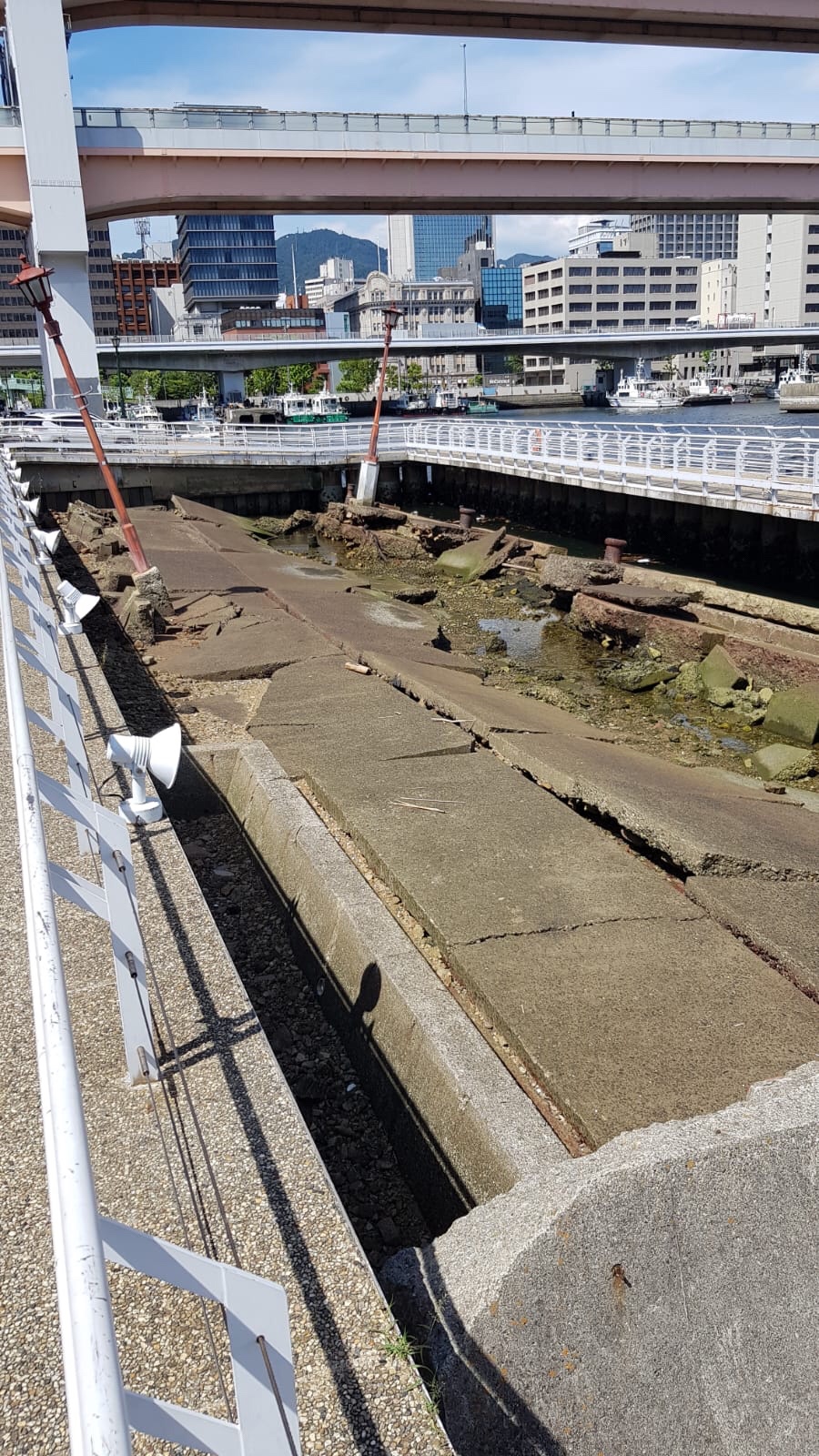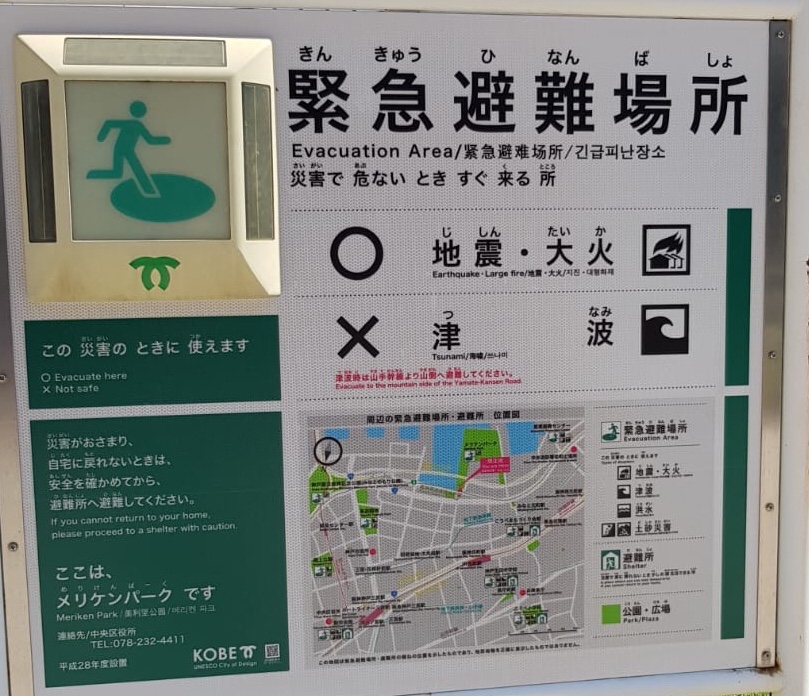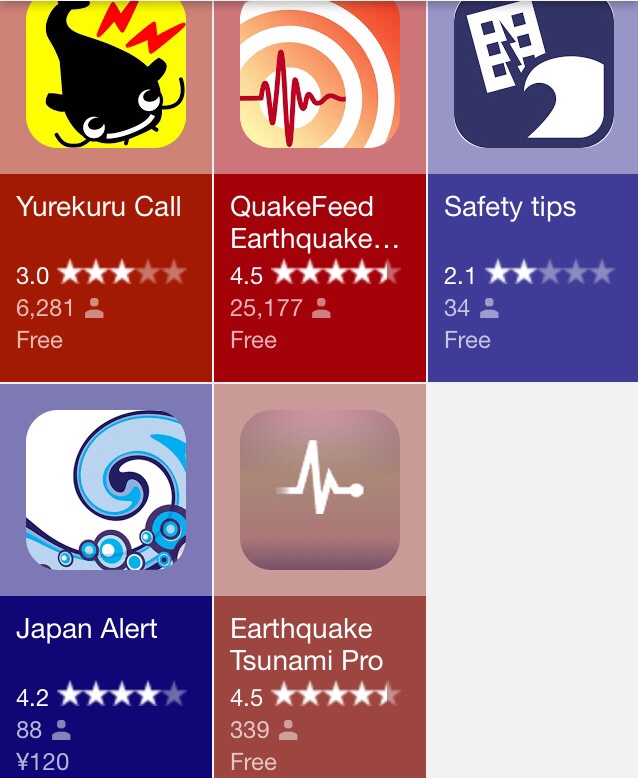Japan is known for its sushi and geisha but also for being a world leader in preparation for tectonic disasters. Sitting on the edge of the Pacific plate, fondly referred to as the Ring of Fire by Geographers, results in Japan being at risk of tectonic disasters (earthquakes, volcanic eruptions and tsunamis).
Japan shows evidence of extensive preparation for the next big tectonic disaster with evacuation signs across the country. But is this level of preparation really needed?

Background in tectonics: how do earthquakes form and why does Japan suffer from them?
Tectonics plates are fragments of the earth’s crust that move by being pushed and pulled by the movements of molten magma.
Movements of magma in the mantle are called convection currents. These are formed when the high temperatures of the earth’s core warm the magma causing it to expand (thus reducing its density) allowing it to rise). Once the magma has reached the earth’s surface is moves, pulling the tectonic plates. The magma begins to cool, contract and then sinks to repeat the cycle.
This process leads to three major plate boundaries. Conservative- when plates move alongside eachother this leads to earthquakes; destructive/convergent- when plate move towards each other forming explosive volcanoes or fold mountains and suffering from earthquakes; constructive/divergent- when plate bull apart leading to the formation of new land by a gentle shield volcano and earthquakes.
Japan is on the edge of the Pacific Ring of fire. Here the denser oceanic plate is subducting (going underneath) the lighter Asian continental plate. This is a destructive convergent plate boundary. When the oceanic plate subducts, it enters into the asthenosphere where it is heated to form magma. The magma rises making its way through the cracks of continental plate. Once enough magma has risen into the magma chamber in the crust, the pressure builds until it can no longer be contained resulting in a volcanic eruption. This process leads to the formation of explosive composite volcanoes – like Mt Fuji.
Plates do not move smoothly past eachother. They have rough jagged edges that get jammed. The plates are still pushing to move in the directions they desire so pressure builds until it is suffice to push past the plate releasing energy. This energy moves through the earth as different types of waves- these collectively are referred to as earthquakes. If these earthquakes occur on the ocean floor they can result in a displacement of a mass of water leading to catastrophic waves, known as a tsunami.
How does Japan prepare for tectonics events?
Japan’s traditional wooden two storey homes (made with paper sliding doors and walls) had the flexibility to withstand small earthquakes and light materials that reduced the death of residents if they were to collapse in earthquakes with a larger magnitude. However as cities have developed into concrete metropolises, how to protect their citizens has had to transform.

Recent tectonic events have left a evident impact on Japan. The Kobe 1995 earthquake that killed 40,000 residents is remembered by the Kobe Earthquake memorial park. Part of which has remains of earthquake damage on the port.

All hotels/hostels/ryokans (traditional Japanese inns) have clearly labeled evacuation instructions. Dependent on the building’s structure and earthquake proof technology- you are advised to evacuate to a predetermined safe spot or to stay in the safely of your abode. In the case that you need to evacuate in the middle of the night, all accommodation include emergency torches (or flashlights -for our American readers).

Cities, especially near the city centres/ CBD, have public evacuation signs on the street in case of the next tectonic event. This is alien to us in the UK where major damage from a tectonic event appears less likely than seeing a pig fly. However they are crucial for locals and foreigners alike to reduce injuries and fatalities during such events.

Is this enough?
Locals advised me to download one of the many apps which warn you about approaching earthquakes, I.e. Yurekuru Call. However residents raised problems with the drain on battery life as many apps only function when it is open and running on the device.

If these general preparations are not sufficient, residents can easily improve their survival changes by entering into their local department stores. These 9 floor superstores have areas dedicated to ‘disaster preparation’. You can buy everything from grab-bags (emergency rucksacks with supplies for several days), dried food in case supplies run low and emergency shelters.

If you live in the vicinity of a nuclear power plant you might consider buying a Geiger Counter to check the radiation levels.

This might sounds extreme. However the 2011 Tōhoku earthquake and tsunami, the Fukushima nuclear power plant became an epicentre of radiation activity. The event was considered a INES (international nuclear and radiological event scale) level 7- the highest possible level making this a major event. Elderly engineers offered their services to repair the plant, knowing that the exposure to radiation would have devastating impacts on their health. But in the true Japanese kamikaze fashion, the elderly preferred to risk the rest of their limited years than allowing life-long or life shorting impacts on younger generations.
Final thoughts
Many of the preparations seem initially extreme to us not normally at risk of tectonic disaster. However, as a tourist, who has not experienced the school based training citizens have, it is comforting that my survival is protected. I haven’t gone to the extent to buy a grab bag or a Geiger Counter, but I have studied the evacuation route and location of the emergency torch at each accommodation- just in case.
⁃ Do you think these same methods could be applied to less developed nations who suffer from tectonic disasters-Such as the Philippines and Indonesia?
⁃ Do other developed nations (such as USA in areas such as California near the SAN Andrea fault line) currently employ the same methods?
⁃ Could this methods be applied to non-tectonic disasters?
⁃ Should countries with lower risk of tectonic hazards (such as the UK) implement these methods?
Thankyou for all your efforts that you have put in this. very interesting info .
LikeLike
Hello! This post couldn’t be written any better! Reading through this post reminds me of my previous room mate! He always kept talking about this. I will forward this article to him. Fairly certain he will have a good read. Thank you for sharing!
LikeLike
Really superb info can be found on weblog.
LikeLike
There are no words to show my appreciation!
LikeLike